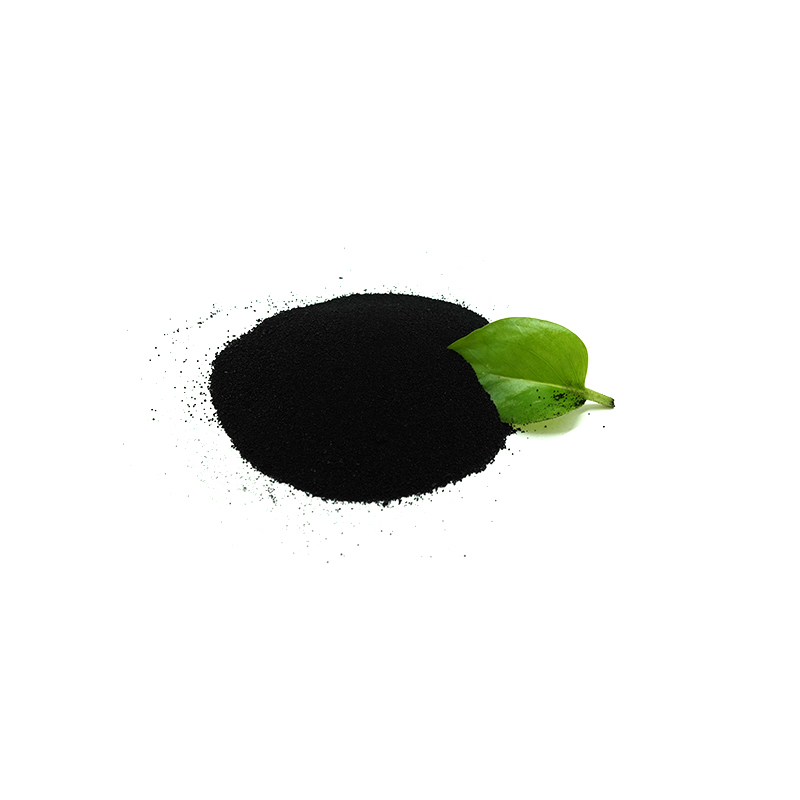Introduction to organic trace element fertilizers
Organic trace element fertilizer is important in understanding the best way of sustaining agriculture and keeping plants healthy. Although they are needed in small quantities, compared to macronutrients such as nitrogen and phosphorus; they are necessary for proper growth and development of plants. These nutrients act as catalysts in enzymatic functions, photosynthesis, and other biochemical reactions within plants.
By providing these essential nutrients from natural sources, organic micronutrient fertilizers offer an alternative to their synthetic counterparts. In contrast to usually chemically synthesized or mined synthetic micronutrient fertilizers, organic options mostly originate from plant, animal, or mineral sources. These types not only provide some vital trace elements including Iron (Fe), Manganese (Mn), Zinc (Zn), Copper (Cu), Boron (B), Molybdenum (Mo) and Chloride (Cl) but also enhance soil structure and improve microbial activity thereby making the soil more fertile for better health of the crops.
“Above all else, choosing an organic trace element fertilizer should be about nurturing the soil,” says Dr. Emily Roberts a scientist specializing in soils.” It is about maintaining the natural nutrient cycle within it which ensures that plants feed naturally off a balance source of nutrients that ensures long term health of the soils.”
This choice between artificial or organic micro-nutrients has profound impacts on both plants and soils. As we step into future where sustainable practices have become more important than never before it is important that gardeners, farmers understand these distinctions with regard to its effects on environment globally concerning food production.
Organic Micronutrient Fertilizers: Key Elements are Vital in Plant Nutrition
Thus, these essential nutrients are supplied by organic micronutrient fertilizers. Every trace element has a unique role to play in the overall health and development of plants.
Formation of chlorophyll requires iron (Fe), which is very important for photosynthesis. Iron deficiency results in the yellowing of leaves due to a lack of chlorophyll, hence leading to chlorosis.
Manganese (Mn) assists in metabolism and is involved in enzyme systems that reduce nitrates within plants. In photosynthesis, it participates by splitting water to release oxygen.
Enzyme systems and the production of growth hormones depend on zinc (Zn). It also helps in protein synthesis.
Copper (Cu) is responsible for enhancing the taste and color of vegetables as well as the color of flowers during the reproductive stage.
Boron (B) helps sugar move across plant cells while keeping cell walls growing appropriately.
Molybdenum (Mo) is necessary for nitrogen fixation by legumes as well as converting nitrate into ammonia inside the plant, thus making nitrogen available to plants.
Chloride (Cl), often seen as a micronutrient that can be toxic if excessive, plays a significant role in osmosis and ionic balance within cells.
“This availability of microelements assures strong growth rates coupled with greater immunity against diseases and natural adversities,” said Linda Peterson, a professor from the University of Agricultural Studies specializing in crop sciences. “This stems from organic fertilizers’ more natural form since they provide slow-release nutrients that align with the way plants naturally take up nutrients.”
Optimal use of agricultural practices requires understanding the impact on crop productivity that may result from these micronutrients. A balanced supply of these trace elements would result in maximum growth potential, better immune defenses, and higher yields, which are all crucial aspects of sustainable farming processes.

Advantages of Using Organic Micronutrient Fertilizers
Organic micronutrient fertilizers have many advantages beyond providing essential nutrients only. These organic fertilizers promote the growth of plants, resistance to diseases, and environmental sustainability.
Plant Growth and Yield Improvement: Organic micronutrient fertilizers supply nutrients in an easily absorbed and used form by plants, thus promoting fast growth and higher yields. For instance, high levels of trace elements like boron and zinc can improve seed and fruit development, which is vital for success in agriculture.
Disease Resistance Enhancement and Environmental Stress Management: Plants fed with organic micronutrients are usually stronger physiologically, hence giving them more ability to resist pests or diseases. Besides, elements such as copper and manganese are crucial in the formation of plant defense against both biotic and abiotic stresses that help the crops deal with extreme conditions such as droughts or frost.
Improving Soil Health and Ecosystem Sustainability: Gardeners and farmers contribute towards soil health over the long term when they use organic options. They improve soil structure, increase water retention capacity, and stimulate beneficial microbes’ growth. This not only enhances nutrient availability to plants but also allows fertility creation over time. An environmental scientist, Dr. Helen Carter, said, “Use of organic micronutrient fertilizers reduces reliance on chemical inputs that degrade soil health and pollute water bodies, thereby supporting a sustainable ecosystem.”
These benefits make organic micronutrient fertilizers indispensable for sustainable agriculture. Therefore, these manures ensure that trace elements needed by plants come from as naturally as possible, making our farming system more sustainable and productive.
Organic Micronutrient Fertilizers: Tips for a Successful Application
For the purposes of enhancing their effectiveness and ensuring that the plants get benefited to the fullest, organic micronutrient fertilizers must be applied properly. Outlined below are some of the best practices that should be followed when applying such fertilizers, as well as common mistakes to avoid and tips on specific crops or plant types.
Best Practices When Applying Organic Micronutrient Fertilizers:
- Soil Testing First: It is important to begin by testing the soil before any fertilizer can be applied in order to ascertain nutrient deficiencies. This assists in choosing the appropriate organic micronutrient fertilizer type.
- Follow Prescribed Dosage: Over-application results in toxicity or environmental pollution, while under-application may fail to meet plant nutrient requirements. The instructions from manufacturers should be strictly adhered to or one can consult an agronomist.
- The Right Timing: Apply a minute quantity of nutritive substances during critical growth stages like pre-bloom or early vegetative stage so that they are available when most needed by plants.
Common Mistakes That Should Be Avoided:
- Negligence of pH Levels: Soil pH largely influences the efficiency of micronutrients. For example, iron and manganese are less available in alkaline soils.
- Overlapping Applications: These involve applications without considering interaction with other fertilizer types leading to nutrient lock-up where some nutrients cannot be accessed by plants.
- Failure to Combine Micronutrients: Some micronutrients work better in sets. An illustration is the improvement of copper and iron coordination when administering them together.
Advice for Specific Plants or Types:
- Legumes: Add molybdenum because it is necessary for nitrogen fixation.
- Fruiting Vegetables: During the flowering through fruiting periods, there is a need for more boron and zinc to improve fruit set and quality respectively.
- Ornamental Plants: Use chelated forms of micronutrients especially for alkaline soils towards better uptake and effect.
By following these rules, gardeners as well as farmers can employ organic micronutrient fertilizers for better plant growth, increased yields, and healthy soil.

Sources and Types of Organic Fertilizers
It is worth noting that natural sources for these fertilizers range from naturally occurring materials to commercially prepared ones. The knowledge of different sources and types will assist farmers and gardeners in making wise decisions concerning their respective needs.
Natural Sources of Micronutrients:
- Organic Matter: Compost plus decomposed organic matter are rich with trace elements added by them into the soil apart from being able to improve soil structure and microbial activities.
- Animal-Based Products: Phosphorus is found in bone meal, blood meal has nitrogen whereas fish emulsion contains potassium.
- Mineral Sources: Green sand, azomite, rock phosphate contain various micronutrients required for plant growth naturally.
Commercial Organic Micronutrient Fertilizers:
- Chelated Formulations: These are products specially designed where there is a binding between micronutrients and organic molecules which therefore makes them readily available to plants. It’s highly effective for low pH soils where micronutrients might become unavailable otherwise.
- Liquid Fertilizers: They come in liquid forms that make it easy to apply especially when one wants precise nutrient management. For foliar applications in which leaves directly absorb nutrients, they can be used.
- Granular and Pelleted Types: These slow-release fertilizers provide consistent quantities of nutrients over an extended time period. This reduces the risk of nutrient runoffs and serves well as a long-term crop need type of fertilizer.
The choice of source depends on several factors including specific nutrient needs of plants, existing soil conditions, and environmental impact considerations. To illustrate, Dr. Aaron Smith emphasizes, “A blended organic micronutrient fertilizer may offer a balanced solution in soils deficient in multiple trace elements while targeted applications might be more appropriate for dealing with specific deficiencies.”
By selecting the appropriate types and sources of organic micronutrient fertilizers; gardeners and farmers can optimize plant health along with sustainable agriculture practices. In this way; plants receive crucial micronutrients efficiently and in the most environmentally friendly manner.
Soil Micronutrient Monitoring and Adjustments
Proper organic micronutrient fertilizer management requires frequent assessment and accurate adjustments of soil micronutrient levels to provide plants with the appropriate nutrient balance for optimal growth and health.
How to Test Soil for Micronutrient Levels:
- Soil Testing: Regular soil testing is the most reliable method of determining true levels of trace elements in your soil. It can reveal any deficiencies or excesses that may harm plants.
- Using Soil Test Kits: There are many soil test kits available from garden centers or online retailers that measure the presence of specific trace elements. Such kits offer quick and handy diagnostics, although professional laboratory analysis may be needed for more detailed examination.
Adjusting Fertilizer Practices Based on Soil and Plant Feedback:
- Balancing Nutrient Levels: If there is a deficit of some micronutrients according to test results, applying a specific organic fertilizer containing these particular micronutrients will help. In case of surpluses, it may be necessary to decrease or temporarily stop applying some nutrients.
- Tailored Fertilizer Applications: Customizing fertilizer applications based on the needs peculiarities of different types of plant can bring about more efficient use of nutrients as well as better plant health. This implies not only remediation but also the avoidance of excessive nutrient levels which are equally detrimental as deficiencies.
The Importance of Regular Monitoring for Optimal Nutrient Management:
- Continuous Assessment: Continuous monitoring allows for adjustments throughout the growing season, adapting to changes in weather, soil conditions, and plant growth stages.
- Feedback from Plants: Practical feedback regarding the effectiveness of the current nutrient management strategy can be obtained by observing plant health and growth responses after fertilizer applications.
“This approach is critical,” says Dr. Sarah Benson, a renowned agricultural scientist. “Sustainable nutrient management requires regular soil testing and tailored fertilizer applications that match specific crops’ needs while responding to the changing environment around them.” She adds that farmers and gardeners who understand their soils and crops can minimize the negative impact on the environment while maximizing yields.
Implementing a systematic approach to monitoring and adjusting soil micronutrient levels ensures that plants thrive in a nutrient-optimized environment leading to stronger healthier plants, and more sustainable gardening and farming practices for gardeners and farmers.
Conclusion
In conclusion, using organic micronutrient fertilizers is necessary to sustain agriculture, having significant benefits for plant life, soil health, and the environment. These fertilizers supply critical trace elements in ways that plants can easily absorb, leading to strong development and resistance against adversities.
Recap on the Significance and Benefits of Organic Micronutrient Fertilizers:
- Essential Trace Elements: Critical nutrients are supplied by these organic micronutrient fertilizers that carry out vital functions in plants such as growth, development, and disease resistance.
- Soil Health: For example, organic soil amendments improve soil structure, boost microbial activity, and maintain soil fertility over a long period. It is because of this that sustainable environmental practices are important for farming.
- Environmental Impact: By using bio-based rather than synthetic sources of micronutrients, gardeners and farmers help decrease chemical pressure on our ecosystems, which promotes healthier environments.
Future Trends and Developments in Organic Fertilizer Technology:
- The agricultural sector is developing more productive organic fertilizers through innovation. This technology would make them even better than they already are; hence reaching more farmers within the globe.
- Bioavailability studies are increasing to enable targeted fertilizer formulations according to crop-specific needs as well as environmental conditions, thus optimizing plant nutrition while reducing pollution arising from wastage.
Organic micronutrient fertilizers will play an even greater role in global agricultural practice as we look forward. By embracing these sustainable alternatives, farmers can grow more nutritious crops with less harm done to their surroundings resulting from their production methods.
As we move ahead into the future, it’s certain that the influence of organic micronutrient fertilizers will become much stronger globally. The strategic use of these environmentally friendly alternatives could ensure food safety at all times along with better plant health and enhanced ecosystem services in line with population trends within our planet today.
Here are three references about organic micronutrient fertilizers :
- PubMed: This database provides access to a vast amount of biomedical literature, which may include studies on the effects of organic micronutrient fertilizers on plant health and soil quality. It’s a valuable resource for finding scientific articles that can give you detailed insights into the biochemical aspects of micronutrient fertilizers.
- National Center for Biotechnology Information (NCBI): NCBI offers a comprehensive range of databases and articles related to biotechnology and biomedicine. This includes resources that might discuss the genetic and molecular interactions of plants with organic micronutrient fertilizers.
- NOAA/NWS Storm Prediction Center: While primarily focused on weather and atmospheric sciences, NOAA’s research often intersects with agricultural topics, including how weather conditions affect the use of fertilizers in farming.







